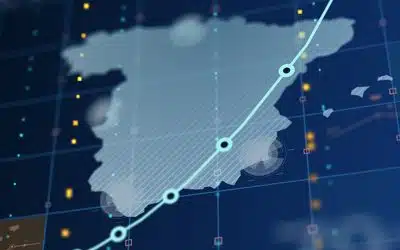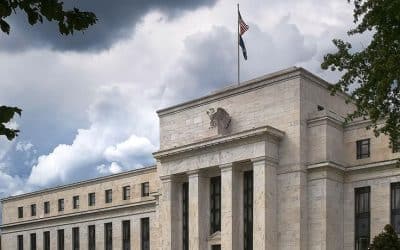The return of inflation?

Redacción Mapfre
Since late last year, we have been seeing signs of a change to the dynamics of global prices. For the time being, these signs relate more to the volatile aspect of the consumer basket and less to a change in long-term inflation expectations. Specifically, it is mainly explained by energy and unprocessed food, rather than by the elements traditionally associated with the long-term (core inflation).
However, it is clear that the current surge has a base effect with respect to February/April of last year, and that the commodity cycle has embarked on an upward trend thanks to the boost in demand from China.
In the US, general inflation reached 5.3% in August–but the core inflation was 4.0%–due to eventual demand factors (Trump/Biden stimuluses), the base effect of 2020, and other effects of the inflation of certain assets dominating the market since the start of the pandemic.
In the EMU, the general CPI grew by around 3% in August with broad differences between countries that have experienced one-off events affecting prices (tax reform in Germany, the Filomena snow storm in Spain, and even the eruption of the volcano on La Palma could lead to an increase in inflation in the coming months, CO2 taxes in general, etc.)
On the emerging markets, inflation has been constantly on the rise for some time (Brazil at 10.4% in August 2021, Mexico at 5.6%), due to the unpinning of expectations and the continuous depreciation of their exchange rates, which transmits imported inflation to production prices.
These indications are, however, accompanied by other indicators that make the diagnosis more complicated. The GDP deflator slowed sharply in the fourth quarter of 2020 globally, indicating a lack of any generalized inflationary force. At the same time, the real rates in most economies remained more or less stable. However, in 2021 there has been a significant increase in prices. These signs are now points for discussion in the global conversation on the nature of inflation. This is because the temporary or permanent nature of inflation is what will induce a certain type of monetary policy and financial market performance with widespread implications for financial activity and stability, which will ultimately be defined by the two scenarios described above, which I would like to emphasize.
The increase is temporary
Following the eventual increase to the CPI in the US and other parts of the world, the previous situation continues. In other words, with inflation rates notably higher than what the central banks propose on both sides of the Atlantic and, in general, coinciding with the symptoms of secular stagnation, as described in the first Panorama 2017 report that we distributed in Economic Research. The global Phillips curves remain flat, generating the discussion we described in the Panorama 2018 report about secular stagnation, the role of the central banks, and the formation of expectations.
In this situation, we see that the increase is caused by:
- An upturn in the price of raw materials.
- The base effect of the drop in prices recorded between February and May 2020.
- Temporary effects of the restricted supply caused by the pandemic.
And, in general, it is a situation in which the potential volatility of the CPI is concerning, more so than a change in the growth trajectory, as the latter is unlikely in a context dominated by:
- Weak demand in a context of wide output gaps.
- Perpetual contained consumption, as savings are not translating into consumption (lower income, wealth, expectations, low elasticity to income impulses derived from aid, aging).
- Low salary bargaining power and a fall in the weight of salary income over GDP.
- Liquidity hoarding and a vast supply of real balances.
- Effects of monetary policy on expectations that keep the Phillips curves flat and far from their long-term values.
The increase is lasting
Reasons for believing that a new prolonged phase of higher inflation is actually here:
- Conceptual cases prevailing in recent years are now erroneous
- The increased price of crude is not temporary, rather the reversion to the previous trajectory of the past five years, consistent with the supply and demand margin existing today.
- The deflationary force of China is running out because it is changing its growth model to one based on consumption, with greater exports of high added value goods. Its trade terms are growing; its currency is appreciating compared to the rest of the world. It is now exporting inflation.
- The validity of some claims of secular stagnation is losing strength. Especially the nexus between potential growth and the type of balance. It is growing again, but there are no productivity gains.
- Changes to the production structure.
- “Reshoring” of plants to the countries of origin due to problems of value chain disruption and adopting automation (increases in prices due to assuming sunk costs and higher salary costs).
- Repricing of production externalities, incorporation of costs through Pigouvian taxes (Carbon Border adjustment tax, Financial Tobin tax, Digital Tax, etc.)
- Energy transition (with greater costs in early adoption than hydrocarbon-based production)
- Changes in the demographic and social structure: high rates of underemployment coexist with unmet demand for skilled workers in new technologies.
- Effects of seigniorage, the implicit monetization of the deficit causes inflation and inflation expectations to rise.
So, they are signs of inflation that may condition (depending on the temporary or permanent nature of said inflation) the type of macroeconomic scenario in which we find ourselves during the coming months.



